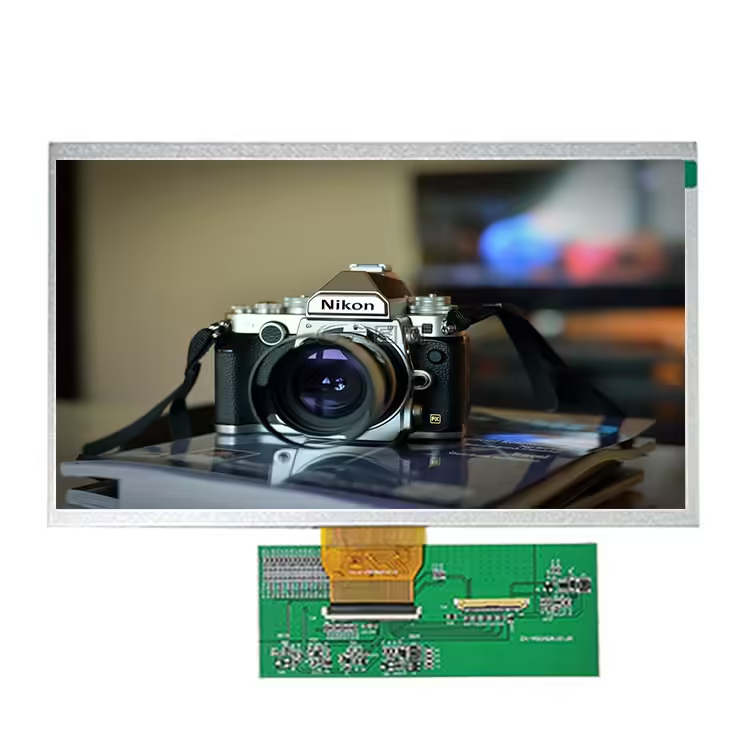In the world of embedded systems and microcontroller interfacing, the HD44780 LCD module stands as a versatile and widely-used component. Often referred to as the “standard” LCD display, this particular module has been a staple in various applications, from DIY electronics projects to industrial automation. The HD44780, or Hitachi HD44780, is a 4-bit parallel interface controller that enables efficient communication between microcontrollers and liquid crystal displays (LCDs). Among the numerous brands available, CHANCEDISPLAY, a reputable manufacturer, offers a range of high-quality hd44780 lcd modules that cater to diverse needs.
The hd44780 lcd module was first introduced by Hitachi in the late 1980s and quickly gained popularity due to its compatibility with a wide variety of microcontrollers, pin configurations, and straightforward programming interface. Its design features a total of 16 pins, making it relatively easy to integrate into a circuit, and supports a standard resolution of 16×2 or 20×4 characters, although custom sizes can also be found in the market.
One of the key advantages of the HD44780 is its command set, which consists of a limited number of functions, such as cursor movement, scrolling, and backlight control. This simplicity allows developers to implement LCD functionality with minimal code, reducing development time and effort. The HD44780 supports both 5×7 and 5×10 dot matrix fonts, providing flexibility in displaying alphanumeric data.
When it comes to selecting an HD44780 LCD module, the Chancedisplay brand emerges as a reliable choice. Chancedisplay is known for its commitment to producing high-quality components that meet industry standards. Their modules are built with durable materials and feature a robust design, ensuring long-term performance in various environmental conditions. The company’s product line includes a diverse range of LCDs with different pin configurations, backlight options, and additional features like touchscreens, making it easier for users to find the perfect fit for their project requirements.

One of the standout features of Chancedisplay’s HD44780 modules is their compatibility with popular microcontroller platforms, such as Arduino, Raspberry Pi, and ESP32. They provide detailed documentation and example code, enabling even beginners to get up and running quickly. Additionally, Chancedisplay’s customer support is responsive and knowledgeable, offering assistance when needed during the design process.
For instance, the Chancedisplay HD44780-based 16×2 LCD module is a popular choice due to its compact size and low power consumption. It supports both 4-bit and 8-bit interfaces, allowing users to choose the most suitable mode based on their microcontroller’s capabilities. The module features a built-in shift register, reducing the required I/O pins on the microcontroller, and its backlight can be controlled through a simple transistor circuit.
Another notable product in Chancedisplay’s lineup is the 20×4 LCD module, which offers more screen real estate for displaying information. This module is ideal for applications that require displaying longer messages or more complex data structures. The larger display area makes it suitable for applications like home automation, GPS devices, or industrial displays.

When integrating the HD44780 LCD module into a project, it’s crucial to understand the timing diagrams and command sequences to ensure proper communication between the microcontroller and the display. Chancedisplay’s modules typically come with a datasheet that outlines these details, simplifying the process for developers.
In addition to the core HD44780 functionality, CHANCEDISPLAY also offers advanced features like backlight PWM control, which allows for smooth brightness adjustment, and some models support auto-detection of display type, eliminating the need for manual configuration. These enhancements not only enhance user experience but also contribute to energy efficiency.
To further enhance the user experience, Chancedisplay provides a range of accessories, such as resistors, capacitors, and connectors, tailored to their LCD modules. These accessories streamline the assembly process and ensure proper setup.
In conclusion, the HD44780 LCD module, with its simplicity and versatility, remains a popular choice for various applications. Chancedisplay, as a trusted brand, offers a wide selection of high-quality modules that cater to different requirements. Their commitment to compatibility, documentation, and customer support makes them an excellent choice for developers looking to incorporate an LCD display into their projects. Whether you’re a hobbyist or an experienced engineer, the Chancedisplay hd44780 lcd modules provide a solid foundation for building intuitive and reliable interfaces in your designs.

